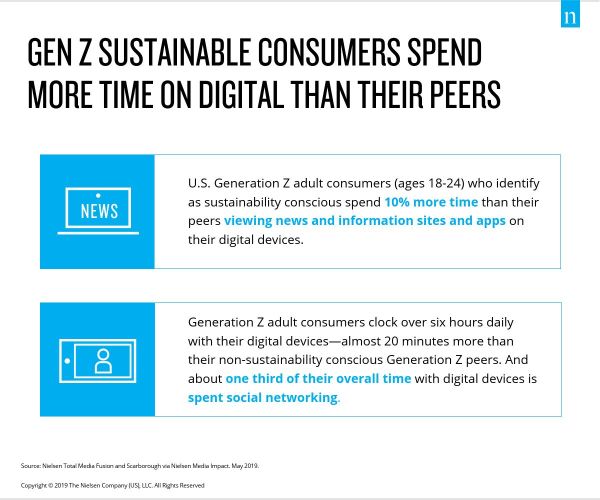The era of the activist consumer has long since arrived, and the signals of this growing movement are everywhere. Just recently, the world witnessed an estimated 4 million people participate in coordinated global climate crisis strikes after being inspired by 16-year-old environmental activist Greta Thunberg.
The activism of Generation Z consumers puts them in a unique position to effect actual change at the business level in ways previous generations weren’t. By thinking beyond how to wield their individual spending power, Generation Z consumers are pushing their households and broader social networks to use the tools at their disposal—their purchasing power and choice of which media content creators and publishers to support—to create real change.
Savvy brand owners and content creators have been quick to respond, while others are racing to catch up. Unilever, for example, plans to halve its use of non-recycled plastic packaging by 2025, and Viacom’s Generation Change platform celebrates those who inspire media creation as well as those who are inspired to act because of the media they engage with.
These signals are creating real opportunities for brands across industries. We expect consumers to spend up to $150 billion on sustainable products by 2021 in the U.S. alone. And across the evolving spectrum of sustainability attributes that matter most to these consumers, environmentally friendly products top the list, both in terms of what consumers view as most important—and what they’re willing to pay more for.
Our purchasing behavior and habits are often shaped by the media content we consume across our devices—and, similarly, we can all shape this content when we share our views with the world.
U.S. Generation Z adult consumers (ages 18-24) who identify as sustainability conscious spend 10% more time than their peers viewing news and information sites and apps on their digital devices. Comparatively, they spend less time with TV screens than the average U.S. Generation Z adult consumer. These consumers are digitally savvy, and they want to stay tuned to what’s happening as it unfolds—and share it with their networks. They also spend more time engaging with content—and creating their own—across their devices. Generation Z adult consumers clock over six hours daily with their digital devices—almost 20 minutes more than their non-sustainability conscious Generation Z peers. And about one-third of their overall time with digital devices is spent social networking.

Our profile of sustainability conscious consumers focuses on consumers who take action on their beliefs: Specifically, sustainability focused consumers carry out five or more eco-friendly activities on a regular basis. For advertisers looking to authentically connect with this critical consumer base, communicating how your product or brand positively contributes to a sustainable world is now a key attribute to any true value proposition. And for content creators and publishers, reflecting the challenges of the world that we live in—while opening up avenues to action that will resonate with Gen Z consumers’ drive to make a positive impact—will be key to building loyalty with an increasingly on-the-move segment.
As more consumers become increasingly focused on how their individual actions can shape a smarter market—and a better world—for us all.




